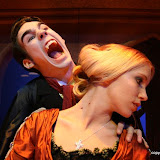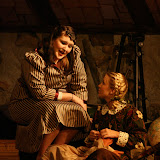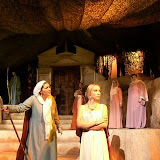I remembered hearing the Gels used to melt when they got wet but I couldn't remember the exact Reason so I decided to look it up. Gelatin Gels, I believe, are the ones that melt. I do find it funny though that we still keep the same name for them even after we changed what they are made of, so they are infact not Gels. Anyways here's the article incase any of you are curious.

"In Shakesperean theatre, red wine was used, in a glass container, as a colorant in lighting. In later days, colored water or silk was used to color light in the theatre. Later, gelatin became the material of choice. An interesting fact is that "Gelatin" gel was available at least until 1975. The name gel has continued to be used to the present day. More heat-tolerant self-extinguishing acetate-based materials (marketed as Cinemoid and Roscolene) were developed to deal with higher output light sources. This material fell out of favour, since it could not withstand the higher temperatures produced by the tungsten halogen lamps that came into widespread use in the late 1960s. The acetate-based material was replaced by polyester and polycarbonate based gels. Those materials have superior heat tolerance when compared to acetate-based gels. Polyester "gels" were introduced in 1969 as Gelatran, the original deep dyed polyester. The Gelatran process is still used today to create GAMColor. Other color manufacturers, such as Lee Filters and Apollo use poleyester as their color substrate. Lee and Apollo use the surface dyed process. Roscolux is 70% polycarbonate and 30% deep dyed polyester. Almost every color manufacturer today uses either polycarbonate or polyester to manufacture their "gels". Even today's gels can burn out (to lighten in color starting in the center) easily, rendering them useless. To help combat this, a high temperature (HT) material,(polyester has the highest melting point 480degrees) can be used to help prolong the life in high-heat output lighting instruments. As instrument design improves, it has become a selling point on many lights to have as little heat radiating from the front of the fixture is possible to help prevent burn-through, and help keep the stage and actors cooler during performances."-Wikipedia




No comments:
Post a Comment